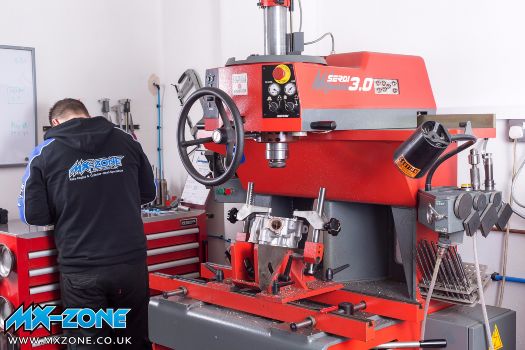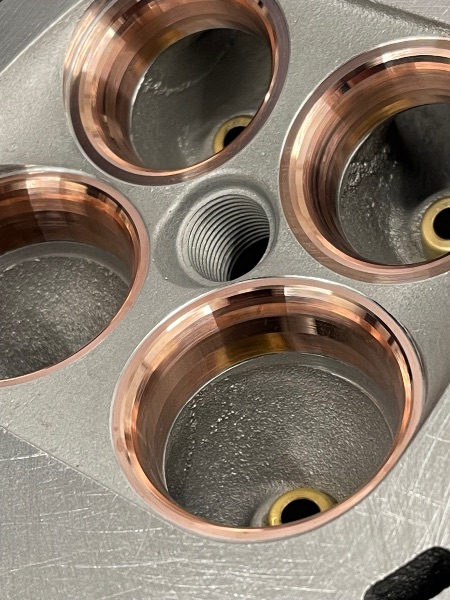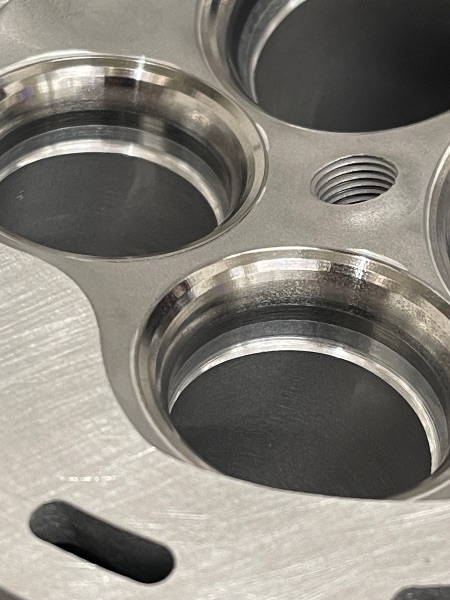Replacing your valves is a very important part of your engine maintenance. Valves are under a lot of stress and care must be taken when replacing them. More often than not, most repair shops will just install new valves without cutting the worn valve seats or replacing the worn valve guides.

Some shops that offer valve seat cutting are using hand cutters. The valve seat has different angles usually 30, 45, 60 degrees. To do this cutting with hand cutters requires each angle (i.e. 30, 45, 60 degrees) on the valve seat to be cut separately. These hand valve seat cutters do not have the accuracy needed. If the valve seat is worn out of true, the hand cutters can only follow the same contour. The hand pressure of the technician can vary. Trying to transition the different degree cuts needed to cut the valve seat cannot compare to the quality you get with specialty machining equipment. The exactness cannot always be seen by the eye, you need special measuring equipment. Most shops that use these hand cutters do not use a concentricity gauge to check the valve seat surface concentricity. This gauge is essential to make sure the valve seat is perfectly round or less than two thousands of an inch (.002') for reliable performance. A race engine should be less than one thousands of an inch (.001'). To put this into perspective, the average human hair is 3 thousands of an inch (.003'). If the valve seats are not cut at all or they are cut with hand cutters, the engine will most likely run, but due to improper valve seat contact, the valves will wear out prematurely and you will not be getting the maximum performance. We offer many options for Valve seat cutting at MXZONE if your unsure of what your cylinder needs please contact us were be happy to help

Call the Machine Shop 01225 791182 or email office@mxzone.co.uk
The best and most accurate way to cut valve seats is with a machine like a SERDI 3.5 valve seat cutting machine. This is the machine that most professional Supercross, Motocross, F1, motoGP, and NASCAR teams use. The SERDI is a very expensive piece of machining equipment but this is required to accurately cut the valve seats. The SERDI can cut all the angles (i.e. 30, 45, 60 degrees) of a valve seat at the same time with one pass using a carbite cutter. What makes the SERDI so accurate is its ability to float on air to find the true center in the valve seat to perfectly align the pilot before the cutting begins. This is the only process to insure an accurate valve seat match. The last and most important step is to check the precision work with a concentricity gauge. Quality precise machining confirmed with the use of a concentricity gauge or vacuum test is the only way to insure the best performance and reliability of your valves.
The End Result
You can gain 10 to 15% more horsepower between an acceptable and a real race prepared valve job. The better seal you have on the valves the higher the compression will be. Especially at low RPM when the compression has more time to leak out.
For those racers that are on and off the throttle as in motocross and tight course racing the largest gain from a perfect seat is in the lower RPM range. After that the flow characteristics kick in from the angles of the seat and the porting. The valves will cool better and have less hot spots in the seat because they are touching the seat all the way around. If you pick the right multi angle cutting bit for a better flow you will pack a lot more mixture into the chamber. Carburetor tuning is more consistent because the valves aren’t constantly moving around the seats. Valve spring harmonics can also be reduced due to the way the hits the whole seat at the same time. Imagine a valve hitting the high part of a seat that wasn’t cut perpendicular to the centerline of the guide. The stem of valve actually has to flex when the head of the valve is force to conform with the seat surface under pressure. This eventually weakens the valve and the head can break off causing catastrophic damage.
Top race tuners know that given a certain engine size and compression, the 5mm area that includes the seat and the valve is the most critical in achieving the greatest amount of power and yet it is usually overlooked. If you can’t put it on a shelf in every performance shop in the country you can’t really market it. Most mechanics and race shops don’t have the equipment to do a standard valve job so they opt to sell bolt on performance or sell new heads if needed
